In my role as a school-based occupational therapy practitioner, I deeply appreciate the significance of hand strength in the journey of my students. Many of them come to me with challenges related to hand weakness or diminished muscle tone. Consequently, their need for enhanced hand strength becomes evident as they strive to hold a pencil with ease, attempt to tie their shoelaces and try to tackle zipping up a jacket – all essential skills that tie into their school-related activities. The level of independence they can attain within the school environment can be restricted by these hurdles.
Hand strengthening refers to the process of increasing the strength and endurance of the muscles in the forearm, hands, and fingers. It is a targeted approach to enhance grasp and dexterity, which can benefit activities requiring manual skills and coordination.
What Can Cause Hand Weakness?
Hand weakness can be caused by many factors, including but not limited to neurological and neuromuscular disorders, injuries, medical conditions, or even limited sensory motor stimulation during child development. Please check out our article about fine motor developmental milestones for more in-depth information.
Why is Hand Strength Important?
Hand strength is important because we depend on our hands to perform and complete many daily tasks and activities. Good hand strength can improve our level of independence and improve our quality of life. Without hand strength, we would have to limit or modify how we perform activities of daily living (ADLs), e.g., bathing, brushing teeth, combing our hair, etc. We would also have to limit the ability to perform instrumental activities of daily living (IADLs) such as cooking, cleaning, driving, etc. The inability to perform these routine but necessary activities, that have come to defined modern life as we know it, may ultimately lead to decreased independence and lower quality of life.
It is no different when it comes to the healthy development of our little ones. When I think about child fine motor development, I can not help but visualize children stocking up wooden blocks, in order for the pile of blocks to reach new heights there needs to be a good foundation at the bottom. Each block has to be carefully and methodically position in a way that would support and ensure the stability of the block above it. In the same way, Strength is a foundational block indispensable if a child is to achieve their fine motor developmental milestones and to acquire the motor skills necessary to engage in playful and learning activities.
What Exercises are Good for Hand Strengthening?
In this article, I will provide a series of simple but powerful strengthening exercises that do not require equipment or materials. These series of exercises can be used independently or as complementary to any game or playful activity. The goal is to empower parents and caregivers with alternatives or additional tools to help children strengthen their hands.
Any physical effort specifically targeting arm and hand muscles is a good hand exercise. We take for granted the hard work our arms and hands do; we usually do not stop to appreciate how convenient they make our lives. However, underneath the skin, a complex array of strings called muscles and tendons function as pulleys to allow for the various grasping patterns, hand movements, and voluntary release patterns we use.
I will spare you some of the details and try to avoid getting too technical here, but did you know that many muscles that help open and close the hand are outside the hand? These are called flexors and extensors; their point of origin is in the forearm and elbow.
For instance, the flexor digitorum superficialis is one of those muscles that assist in closing the hand to grasp objects. The extensor digitorum facilitates the opening of the hand for release. And the list goes on and on… We could continue expanding on the anatomy and physiology of the arm and hand, but that could be the topic for another post.
Now, let’s talk about the exercise routine! Here is a series of exercises in which we use the strength our kiddos already have in their upper extremities to challenge the muscles in their arms and hands. So encouraging more muscle growth and strength. Before we begin, let’s make this activity exciting for our kiddos by incorporating music or songs. This is our chance to get creative to make this an enjoyable and engaging activity. Also, encourage your kiddos to do their best within their comfort level; if an activity feels uncomfortable or painful, they should pause and try it again at a later time.
- Finger Push-ups
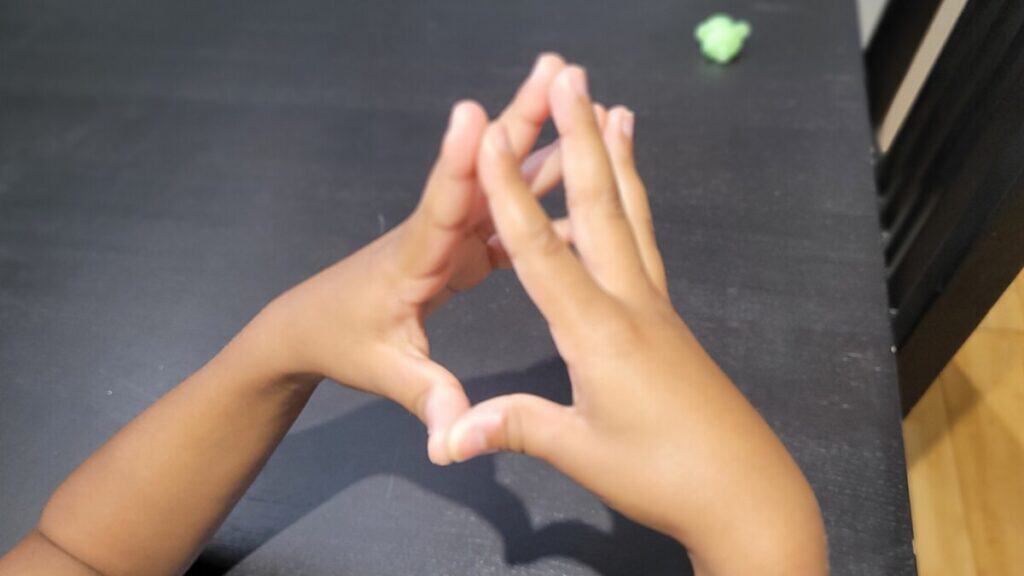

This activity could be performed while seated at the table. We begin by bringing both hands together by having each finger touch its corresponding finger on the other hand, e.g., right and left thumb together, right and left index together, and so on. Then, separate the fingers slightly from each other (abduction). At the starting point, only the fingertips will be touching. Children will then bring the right and left hand together by pressing towards each other. At this point, all fingers from the right and left hand should be touching each other except the thumb and the palm. You will know they are pushing hard enough because the skin color near their fingernails will turn slightly white. This simple but powerful movement can be done at least ten times, or we can take this opportunity to practice the alphabet or count from 1 to 10.
- Finger Wrestle

First, have children bring both hands together, placing fingers in a claw position with one palm facing up and the other down. As both hands are interlocked, ask children to pull both arms in the opposite direction as much as possible and hold for about 5 seconds each time. Remind them to keep their fingers interlocked while performing this exercise.
When done correctly, children will not only exert pressure on the muscles of their hands but also on their shoulder muscles. Again, we can use this opportunity to have the little ones practice the letters of the alphabet or count by fives. First, from 1 to 5, take a break. Then, from 5 to 10, take another break. And finally from 10 to 15. Be creative and incorporate anything that will captivate their minds, keeping them engaged while performing this activity.
- Finger O’s
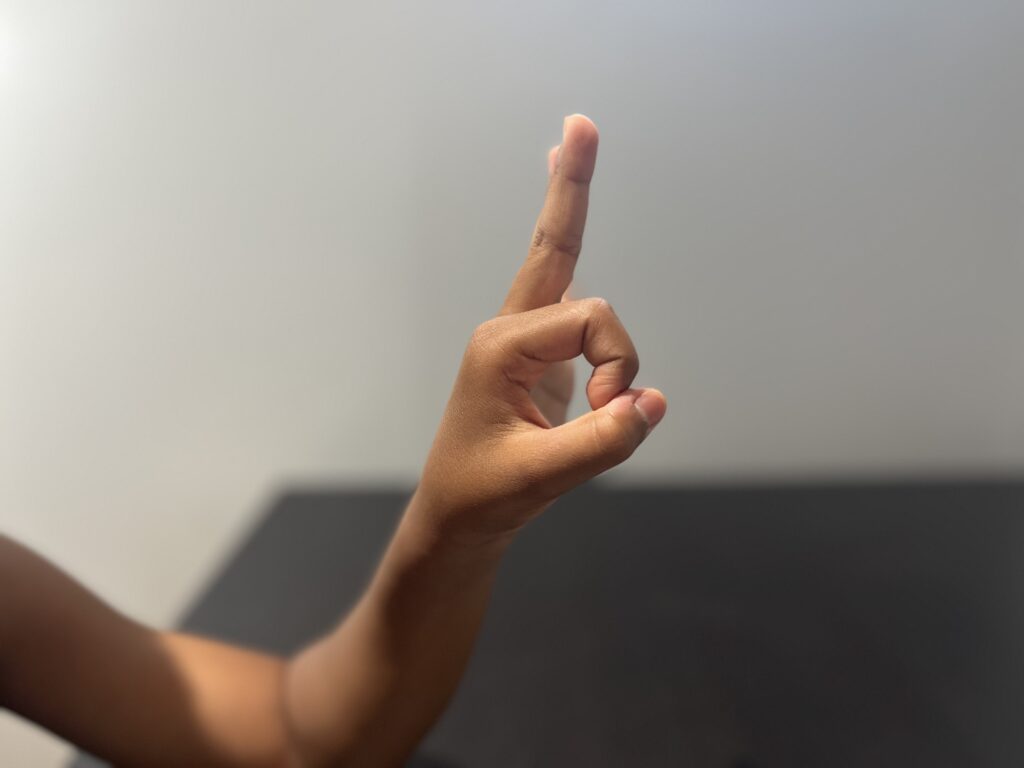
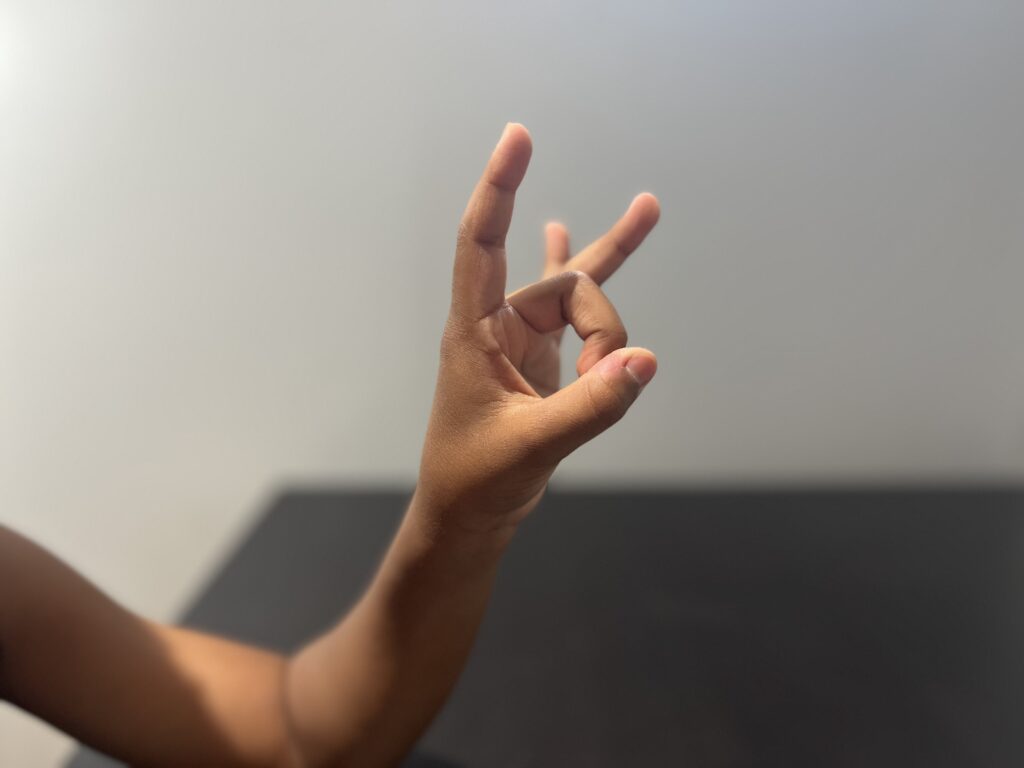
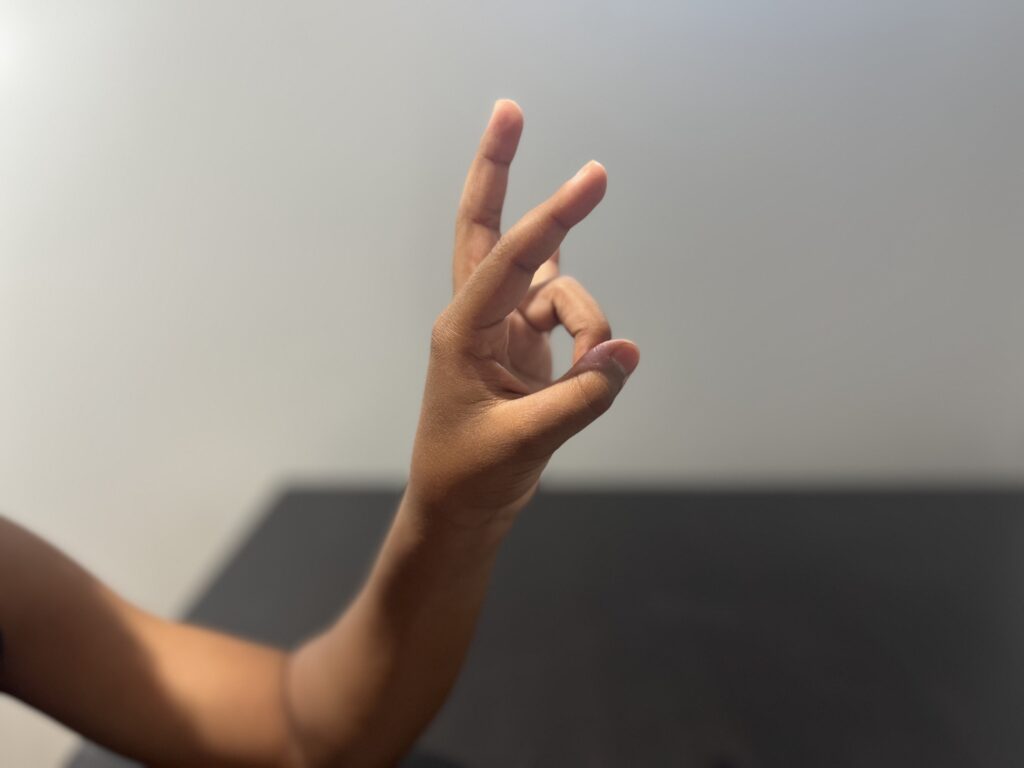

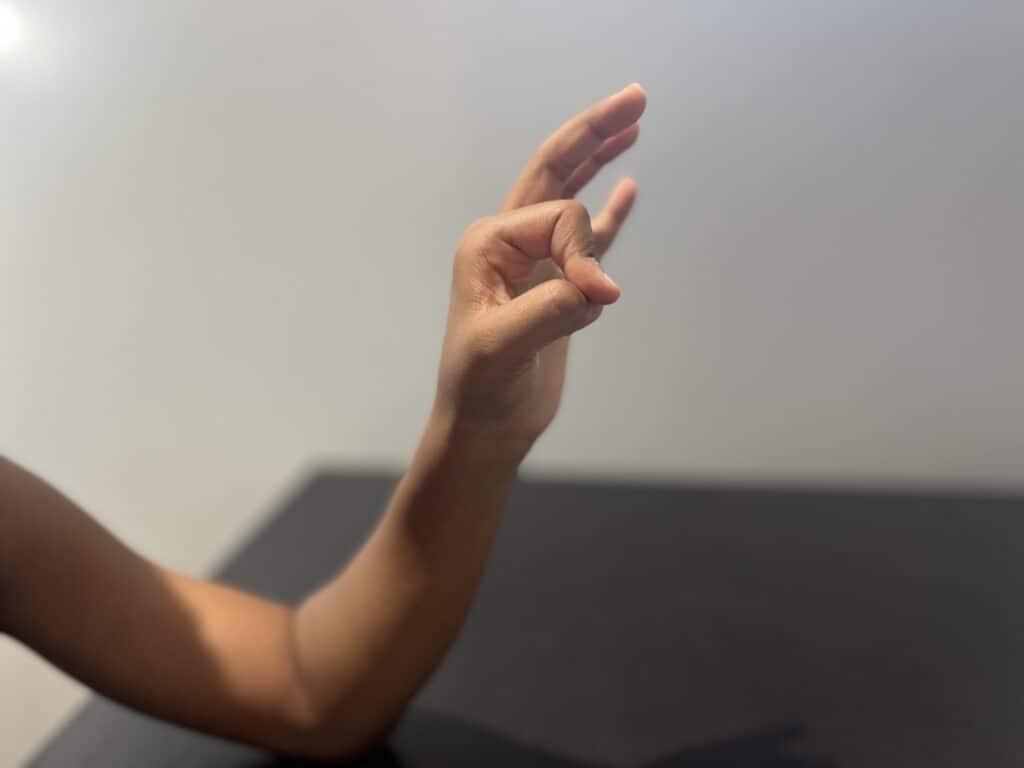
This activity is similar to having children count with one hand, touching each finger at a time with the thumb. However, for strengthening purposes, I modified this activity by having children make letter O’s with their fingers. We will tap each finger by touching each fingernail with the back side of the thumb.
We will ask the kids to hold this position for 5 seconds before moving the thumb to the next finger. While holding, we will ask them to push against the thumb without breaking the O. They will begin with the index finger and end with the pinky finger. They can repeat this activity by going around both hands twice or as often as they would like. Or, as I mentioned before, you can incorporate counting or practicing the alphabet as well. This exercise is good for strengthening the intrinsic muscles of the hand and the extensor muscles.
- Finger Snapping
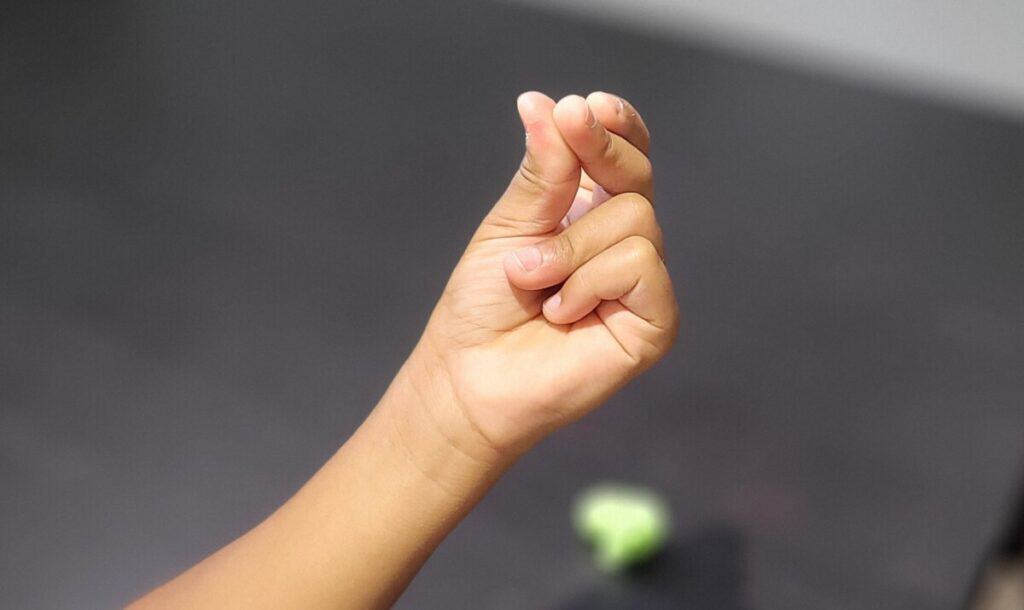
Last but not least is finger snapping. I know… some of you might be unimpressed with this exercise, but you will be surprised about how powerful this exercise is. Recently, a group of physicists at Georgia Tech and Harvey Mudd College set out to determine how powerful finger-snapping is. They published their findings in the Journal of the Royal Society Interface.
One of the surprising findings from this research was that the motion produced between the middle finger and the thumb generates the highest rotational acceleration ever observed in humans. In more simple terms, this movement is three times as fast as a Major League Baseball pitcher’s arm. If you want to learn more about this research study, click here.
So, as you can see, finger-snapping is not a minor feat. We can ask them to snap their fingers ten times for each hand or ask them to snap their fingers while playing The Addams family theme song in the background; Halloween, anyone? This simple, fast, and powerful exercise works the arches of the hand, intrinsic hand muscles, and finger flexors. It also helps in improving pencil grasp.
Integrate this straightforward exercise routine seamlessly into your children’s daily schedule, whether unwinding in front of the TV, bonding during family moments, engaging in board games, or simply relaxing at home. The key is to make it spontaneous and enjoyable. With a bit of fun and minimal effort, you’ll soon witness the remarkable development of their hand strength. If you want more fun ideas to help your children strengthen their hands, check out our post about fun activities for hand strengthening.
Company Motto: “Empowering our children goes a long way in helping them become independent and build their self-esteem.”
